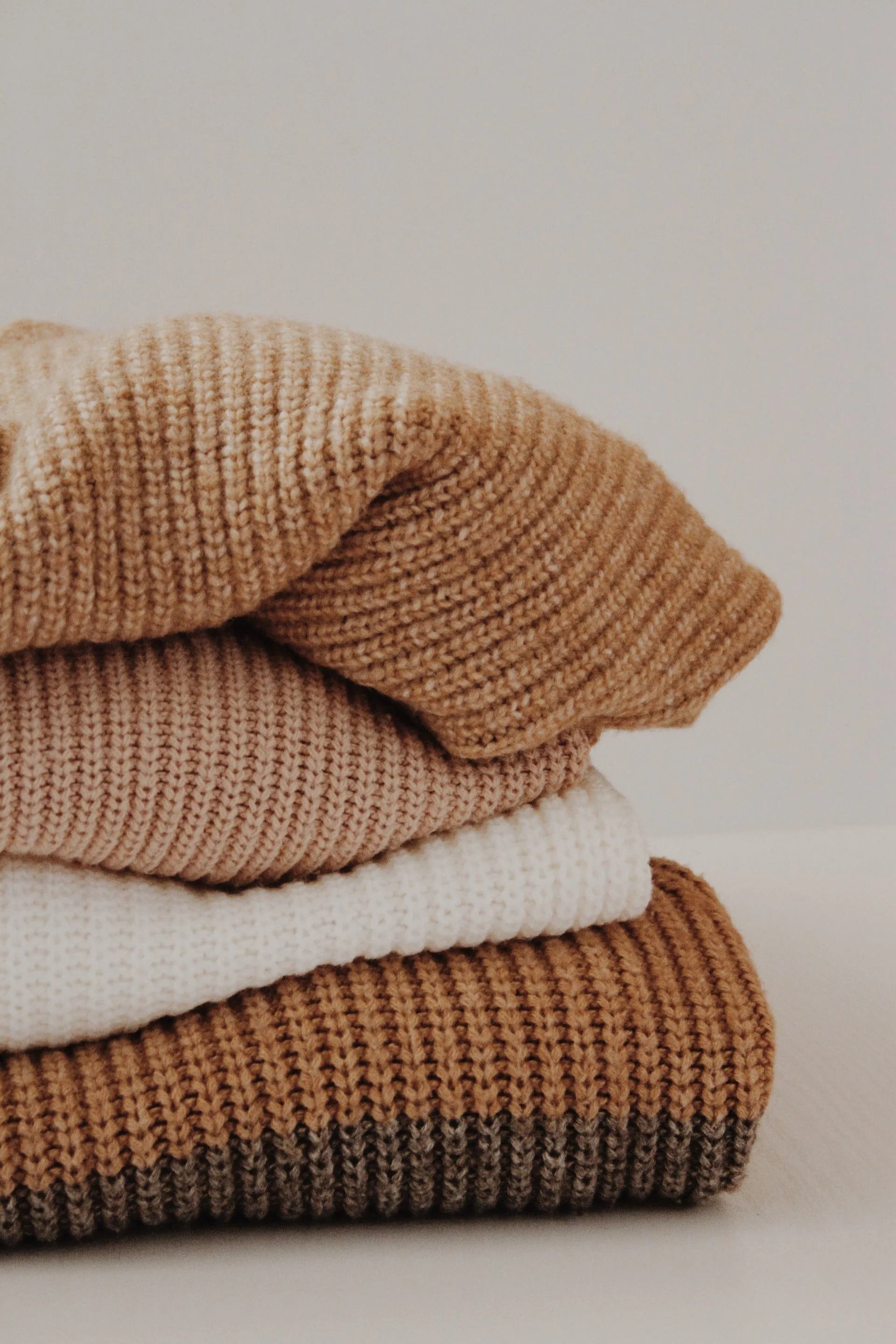How Wool Manages Moisture
Wool is a textile fiber from sheep and other mammals like rabbits, camelids, and goats. Wool is one of the greatest fabrics for wicking away sweat. It also has several other fantastic characteristics.
In addition to clothes, wool has been used for blankets, horse rugs, saddle cloths, carpets, insulation, and upholstery. Wool felt is used to quiet stereo speakers and heavy machinery, as well as to cover piano hammers. The ancient Greeks lined their helmets with felt, and the Roman legions wore wool felt breastplates. Wool has also traditionally been used to make cloth diapers.
Wool is not only a moisture-wicking fiber, but it is also a sustainable and environmentally beneficial fabric. Wool is also more environmentally beneficial as a carpeting material (than nylon or polypropylene, which are sourced from petroleum), especially when combined with a natural binding and formaldehyde-free glues.
Wool is silky, odor-resistant, and great for regulating body temperature. This paper will look at how wool regulates moisture and how it can control moisture. Continue reading to find out more.
Moisture Management
Moisture management or moisture-wicking is a fabric property that allows it to dry quickly by absorbing moisture from the skin and spreading it across a large surface area. Moisture-wicking clothing collects moisture (in the form of sweat), distributes it over a larger surface area, and dries faster than traditional clothing. As a result, moisture saturation and a sticky feeling are avoided.
Sweat exchange from the skin to the atmosphere regulates body temperature and maintains thermal balance, which regulates how relaxing physical activity and ambient conditions are. Clothing greatly aids in the elimination of excess heat produced by the body to maintain a core temperature of 37°C
Moisture-management materials control heat and moisture to keep the body cool and maintain body temperature. Perspiration wets and wicks the fabric before evaporating from the skin through the garment and into the atmosphere. Polyester has a low moisture absorption rate, polypropylene has excellent moisture-wicking characteristics, and polyamide possesses wicking and durability properties.
The weight, fineness, construction, and pattern of the fabric and the clothes themselves influence how much moisture is transported from the skin to the environment via clothing. Fabric structure, moisture regain, and fiber type has all been proven in studies to have an impact on comfort-related qualities. The yarns, loop density, fabric structure, and fabric thickness all impact a fabric's cumulative one-way transport capacity (OWTC). This suggests that a variety of fabric structural properties influence moisture control. Fabric construction should be considered for optimizing moisture management.
Moisture management techniques
Moisture can be controlled by applying fabric finishes or combining fibers with finishes. According to research, the following are some strategies for regulating moisture:
Using spacer fabrics
The wool allows moisture and heat to escape. Spacer fabrics are commonly used in producing sports gear, backpacks, car seat cushions, and bras due to their natural ventilation characteristics.
Using phase-change materials
This involves using materials that can absorb and emit heat without affecting the temperature. All applications requiring thermal energy storage and release should employ phase transition materials (PCMs). PCMs act like heat energy batteries because they absorb heat energy as they melt. They can be "recharged" by freezing them until they crystallize and release the stored energy back into the environment.
Using the pine cone effect
In high humidity or wetness in the microclimate, the porosity of subsequent knitted, woven, or non-woven materials rises, allowing moisture to escape, or lowers in low humidity or dry conditions, increasing insulation. This is referred to as "the pine con."
Absorbency and moisture repellency
Moisture absorption refers to a fabric's ability to absorb moisture. Its ability to quickly collect moisture in a short area makes it an important feature in textiles. On the other hand, absorbent materials are more likely to acquire discolored and retain odor over time.
Cotton, for example, is inherently absorbent, but it lacks the strength and durability of synthetic fibers. Nanotechnology is used to make minute modifications to synthetic polymers to give them the requisite textile characteristics.
Liquid moisture repellency refers to a material's hydrophobic ability to resist moisture. Water-repellent fabrics have a molecular layer that allows them to withstand higher levels of moisture exposure without soaking through. Moisture beads up and rolls off the fabric's surface rather than being absorbed into the fibers.
Moisture Management of Wool Fiber
Wool fibers are hollow, but they absorb moisture well. Wool absorbs roughly one-third of its weight in water. Wool, like many other fabrics, absorbs sound. While some sheep breeds produce natural colors such as black, brown, silver, and odd combinations, most sheep have a creamy white tint.
At higher temperatures, wool burns faster than cotton and other synthetic textiles. It contributes less to harmful gasses and smoke than other flooring materials when used in carpets because it has a lower rate of flame spread, a lower rate of heat release, lower heat of combustion, and does not melt or drop.
Wool rugs are essential in high-security facilities such as trains and airplanes. Wool is commonly used in clothing for firefighters, soldiers, and other occupations where there is a fire risk.
The Importance of Wool Moisture Management
The importance of wool fiber includes the following:
Hydrophobic and hygroscopic
Wool fibers are good for covering wet diapers because their hydrophobic (repel water) exteriors and hygroscopic (attract water) interiors prevent wicking and keep outer garments dry. Because it is air permeable, moderately antibacterial, and water resistant, lanolin-treated wool felt reduces odor production.
Wool diaper covers, used as covers for several modern cloth diapers, are available in various contemporary commercial knitting styles. In preliminary testing, woolen underwear has been shown to protect against heat and sweat rashes due to its better capacity to absorb moisture than other fibers.
Temperature and warmth regulation
Wool was the best insulation before synthetic fabrics were invented, keeping early polar explorers and mountain climbers warm and frostbite-free. But how can one fiber do so much when lightweight wool can keep you cool on a sweltering day?
Merino Wool absorbs and releases moisture through a process known as the heat of sorption. When wool absorbs moisture from the air, a chemical process produces heat, warming the person wearing it. Wool strands' inherent crimp creates tiny pockets of warm air trapped in cold conditions and act as insulators, preserving heat close to the body.
In hot weather, the same mechanism provides cooling because wool releases moisture as it absorbs heat from the user. The tiny air pockets created by the fiber's crimp trap cold air and insulate the wearer from hotter temperatures. Even in hot weather, wearing wool keeps you cool and dry by drawing moisture from your skin for evaporation.
Breathability
Wool is the only material that will keep you dry and warm in wet conditions; yet, how does wool take moisture away from the wearer without using chemicals in synthetic fabrics?
Even after absorbing up to 30% of its weight in water, wool keeps its dryness to the touch. Wool absorbs water molecules and attracts moisture from the skin to the cloth's surface, where it evaporates. Wool releases moisture into the air more effectively than other textiles.
Wool can transmit water vapor before it becomes perspiration and wick sweat away from the person. Wool may dissipate moisture through its fibers rather than only through fabric holes. Due to its ability to absorb and release moisture from the air, Wool is one of the most breathable and pleasant materials available.
Antimicrobial properties
Wool is the best fabric to keep you smelling fresh after a strenuous climb or a hot day in the sun. You can even wear wool clothing all day without developing a strong odor. What is it about wool that avoids odor so effectively?
Lanolin, a natural wax found in wool, has antibacterial properties that kill the bacterium that creates sweat odors. Furthermore, because wool regulates moisture so well, bacteria that survive do not have access to the damp conditions required for growth.
Wool clothing does not collect odor-producing bacteria, so it not only smells better at the end of the day, but it also does not produce a chronic stench that cannot be eliminated, as many synthetic fabrics do.
Durability
We all know that wool clothing is tough and holds its shape far longer than other textiles, but why does wool hold up so well to wear and tear?
Keratin, a protein molecule in human skin and hair, is the major component of wool fibers. Because of these molecules' interlocking nature, Wool can be bent and stretched tens of thousands of times without injury.
Nylon can tolerate 75 bends, whereas silk and cotton can only withstand fewer than 5,000! Wool clothing has flexibility due to the inherent curl of the fibers; it may be worn and cleaned numerous times without losing shape.
Moisture Management of Merino Wool
Merino wool is the best wool fabric for moisture wicking for the following reasons:
Comfortability
Merino wool is softer and warmer than other types of wool. The Merino wool fiber is given a special hydrophilic softening treatment after dying by padding or exhaustion. Wool fibers are typically 40 microns thick when the fibers are shorter, the clothing tears and feel abrasive against the skin.
Merino wool, on the other hand, is a little different. Merino fibers have a thickness of 20 microns, making them more flexible when woven into clothes. Furthermore, the fibers are longer and softer, making it more difficult for a loose thread to emerge and bother you.
Excellent Finishing
It is common practice to remove impurities such as silicone away from the skin before treatment because the finish's performance in terms of wetting time and durability is dependent on the cleanliness of the fiber surface before treatment. Heat treatment makes the finish permanent, and the higher the temperature, the more durable it is.
When you possess Merino wool products, you should know they are not made of traditional fabrics. They cannot easily be washed and dried on a heat source within hell's walls. They must be handled with care. The material is resilient due to its natural elasticity, suppleness, and strength. If you take care of your Merino clothing, it will most likely last you a lifetime.
Absorbency and Resilience
Wool traps dead air more than any other material due to its intrinsic crimp. Dead air is a great insulator and barrier against the elements.
Furthermore, wool fibers are so good at wicking moisture from the skin that even if the cloth is completely wet, the skin's surface will remain dry. Merino fibers and fabrics can absorb up to 30% of their dry weight before becoming damp and still feel dry to the touch. Synthetics that absorb less than 7% generally feel damp.
The interior fiber structure of wool can store moisture. When your body heats up, the moisture in the fiber begins to evaporate, cooling the gap between your skin and the cloth. The more evaporation and the stronger the cooling effect, the warmer it becomes.
Individual wool fibers can be twisted, flexed, and stretched in any direction 30,000 times or more without harm because they are mostly composed of the same protein that makes up our skin and hair—keratin—which provides structure to our skin and hair. That is a very strong fiber! The "fiber crimp," a natural curl in wool fibers, improves elasticity and durability.
Wrinkle-Free Fabric
Why do fabrics wrinkle? When exposed to heat and water, the bonds between fabric fibers break and become less aligned. As the fabric cools, new connections form, producing a wrinkled appearance. Despite the inconvenience, Merino wool will help you avoid wrinkles.
Merino wool fibers contain a crimp, or spring-like structure, giving clothes flexibility. They are not realigned by heat or moisture. According to research, merino wool can stretch up to 30% of its length and recover. As a result, the next time you fly for eight hours, your clothes won't seem like they were yanked from a suitcase.
Fire Resistance
This cloth is popular among firefighters and rescue personnel because to its flame-resistant properties. It will not melt, sear, leak, or adhere to the skin in hot temperatures.
Due to its chemical composition and high water content, Merino wool cannot ignite because there is little oxygen available. If it does combust (at 600 degrees Celsius), it only chars and does not ignite. This may not seem like much to the average person, but it might mean a fireman's difference between life and death.
One of the few ways to demonstrate that your Merino wool clothing is indeed wool is to burn it. If it just chars and does not catch fire, you have high-quality Merino. If your clothing catches fire, it's probably not composed entirely of Merino wool. You'll also need to contact the fire department, which does use base layers made completely of Merino wool.
Anti-Statics
Static electricity tends to collect on garments when materials brush against one another in low-humidity conditions. The clothing absorbs a positive or negative charge and attaches. Even if this generally occurs in a dryer, walking outside may result in static electricity build-up. It may not seem a big deal if your clothes continuously stick to your skin, but it can be inconvenient.
Merino wool has anti-static properties due to its natural neutral charge and ability to absorb water vapor. Because of the significant volume of water vapor in the fabric, it is virtually difficult for a static charge to form. I know you're surprised!
Furthermore, the anti-static properties and presence of lanolin help to prevent stains on your MW clothes. In addition to resisting dust and grime, which are common substrates for the formation of stains, the hydrophilic and anti-static properties combat microbes.
UV Protection
Because outdoor enthusiasts who spend their days chasing the sun are known to favor merino wool, it stands to reason that this material provides outstanding UV protection. Unlike other types of clothing, wool absorbs radiation from a wide range of wavelengths across the entire spectrum keeping the wearer safe.
Merino Wool Structure
Before delving into the specific science underpinning Merino's magic, it's crucial to peel back the layers of a single Merino wool fiber.
Shell Cuticle Cell: The robust exterior protects the inner from injury. The robust case protects the contents from damage. These cells contain a one-of-a-kind wax coating that keeps them water-resistant and allows them to capture air vapor.
Cortex: Over time, use frays a network of relatively weak links in the cortex. Due to its limited chemical resistance, Merino clothing should also only be cleaned with mild detergent.
Cortical Cells: These delicate inner cell structures contribute greatly to the skin's resilience, suppleness, and capacity to mend wrinkles. Because they expand differently when absorbing moisture, ortho cortical and paracortical cells control the crimp of Merino wool. The better these cells are organized, the more crimp is available. As a result, finer fibers produce more crimp.
Macrofibrils: Long fibers encased in a matrix region containing bundles of fine fibers.
The Matrix: A protein-based structure that can inflate to one-third its original size without "feeling" wet. Merino has qualities that aid in sweat-wicking, odor absorption, fire retardancy, and anti-static capabilities.
Microfibrils: These act as re-bar supports in cement, providing flexibility, resilience, and strength.
The Helical Coil: A helical, spring-like protein structure inside microfibrils that helps prevent excessive fiber stretching. Merino wool's flexible, robust, and wrinkle-free characteristics are due to these structures.
Frequently Asked Questions (FAQs)
Do Moisture Wicking Clothes Show Sweat?
Moisture-wicking textiles, while generally sweat-resistant, can nonetheless disclose sweat. Furthermore, some materials will absorb more perspiration than others. Sweat is visible on your skin because it is a mixture of water and body oils.
How effective are sweat-resistant fabrics?
The vast majority of sweat-resistant materials perform admirably. Remember that they are designed to be that way. On the other hand, superior materials will always be able to repel moisture and perspiration better than inferior ones. Because of this, merino wool is one of the greatest moisture-wicking textiles available. It is constructed of a high-quality fabric that resists perspiration and odor.
Why does regular wool itch?
Wool contains keratin, the same protein that builds up human hair. As a result, the chemical mechanism that causes wool to feel itchy is abolished because humans cannot be allergic to their hair, as far as we know. Furthermore, the thermal itching response is eliminated because wool has good thermoregulation.
Conclusion
Merino wool fabric is versatile, warm, and natural. It is also very good at managing moisture. Textile makers understand the importance of moisture management in managing temperature, improving comfort, and shortening drying periods.







